(2537 products available)




































































































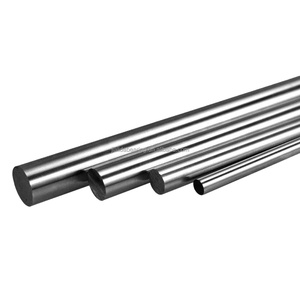
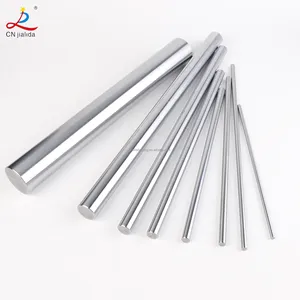



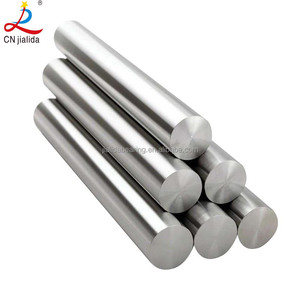






















































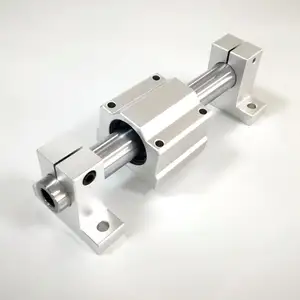



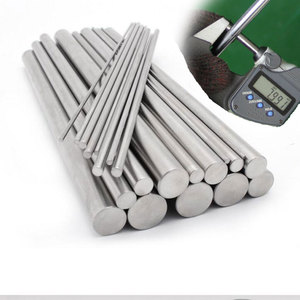























































There are many different types of CK45 shafts that suit various industrial applications. Here are some of them:
CK45 Carbon Steel Round Bar
This type of shaft is used in applications that require low strength and good machining properties. The shafts are manufactured in round cylindrical shapes that allow for smooth rotation and uniform force distribution. They are commonly used in the automotive and oil and gas industries for parts like axles, shafts, and pump rods. They also find applications in construction and mining equipment.
CK45 Alloy Steel Flat Bars
Flat bars are made in rectangular or square shapes. They are used in applications that require high strength and good welding properties. The bars are useful for structural components, machine frames, and support brackets. They also find applications in the construction industry for beams, columns, and other load-bearing elements. In mining and material handling equipment, flat bars are used for conveyor systems and other equipment that moves bulk materials.
CK45 Hollow Bars
These are bars with a tubular cylindrical shape that allows for the transmission of fluids and gases. They are used in applications that require high strength and good corrosion resistance. Hollow bars are suitable for piping systems, hydraulic and pneumatic systems, and scaffolding and temporary structures. They find applications in the oil and gas industry for downhole tubing and completion equipment.
CK45 Forged Bars
These are bars manufactured using a forging process. The bars have enhanced strength and toughness properties. They are used in applications that require high impact resistance and fatigue strength. Forged bars are useful for heavy-duty equipment, mining and material handling equipment, and automotive components like crankshafts and connecting rods.
CK45 has a carbon content of about 0.42%. The following are some of the specifications of CK45.
Tensile Strength:
CK45 has high tensile strength. Tensile strength is the maximum amount of tensile stress that a material can withstand before failure. The tensile strength of this steel is 570 N/mm2.
Yield Strength:
CK45 also has high yield strength. Yield strength is the maximum amount of stress that a material can endure before permanent deformation. The yield strength of the steel is 350 N/mm2.
Hardness:
Hardness is a property that enables a material to resist abrasion and indentation. The hardness of CK45 is measured using the Brinell Hardness number (BHN) and the Rockwell Hardness Scale (HRC). The hardness of this steel is between 170 and 210 HBW and 50 and 55 HRC.
Impact Toughness:
Impact toughness is the ability of a material to absorb energy without breaking. The impact toughness of this steel is measured using the Charpy V-Notch test. The impact toughness of CK45 is 40 Joules at room temperature.
Fatigue Strength:
Fatigue strength is the ability of a material to resist failure under repeated loading and unloading cycles. The fatigue strength of this steel is 230 N/mm2.
Elastic Modulus:
Elastic modulus is the measure of a material's resistance to elastic deformation when a stress is applied. The elastic modulus of this steel is 210000 N/mm2.
Creep Strength:
Creep strength is the ability of a material to resist deformation under constant stress over a long period. The creep strength of this steel is 100 N/mm2 at 500 degrees Celsius.
Thermal Conductivity:
Thermal conductivity is the ability of a material to conduct heat. The thermal conductivity of this steel is 45 W/mK.
Electrical Conductivity:
Electrical conductivity is the ability of a material to conduct electrical current. The electrical conductivity of this steel is 3.2 x 106 S/m.
Corrosion Resistance:
CK45 is not highly resistant to corrosive environments. However, users can improve its corrosion resistance through coatings and paints.
Weldability:
CK45 is easy to weld using conventional welding techniques. Some of the welding techniques suitable for this steel include gas metal arc welding, gas tungsten arc welding, and shielded metal arc welding.
Maintaining CK45 shafts is important in order to preserve their mechanical properties and prolong their service life. Here are some of the maintenance requirements:
Inspection:
Users should conduct regular inspections to identify early signs of wear and tear, corrosion, and cracks.
Cleaning:
Users should clean the shafts regularly to prevent dust, grease, and dirt accumulation. Cleaning also prevents corrosive attacks on the shafts.
Lubrication:
CK45 shafts should be lubricated to prevent wear and tear from friction between moving parts. Users should apply the right lubricant to the shafts.
Protective Coatings:
Users can apply protective coatings like paint to enhance the appearance of the shafts and protect them from corrosive attacks.
Mechanical Maintenance:
Users should maintain the mechanical components of the shafts to prevent imbalance and vibration.
Electrical Maintenance:
Electrical maintenance ensures that electrical components of the CK45 shafts are in good condition.
Thermal Maintenance:
Thermal maintenance involves ensuring that the temperature of the shafts does not exceed the limit set by the manufacturer.
Periodic Maintenance:
Users should carry out maintenance services according to the manufacturer's instructions.
Choosing the right CK45 shaft for a specific application requires a thorough understanding of the features, benefits, and factors affecting its performance. Here are some key considerations:
Load-bearing Capacity:
Consider the load-bearing capacity of the CK45 shaft. The buyer should estimate the loads the shaft will bear in the application. If the shaft is underloaded, it will deflect excessively, affecting machine accuracy. On the other hand, overloading can lead to failure.
Diameter and Size:
Determine the correct size and diameter of the CK45 shaft suitable for the application. The shaft diameter impacts torque transmission and the shaft's ability to resist bending and torsional vibrations.
Length:
Consider the length of the CK45 shaft for the intended application. Longer shafts are prone to deflection and vibrations, which may limit their application in high-speed operations.
Heat Treatment:
Heat treatment enhances the mechanical properties of the CK45 shaft. Treated shafts offer higher hardness, wear resistance, and toughness. Consider the heat treatment process based on the expected service conditions.
End Fittings:
Determine the end fittings required for connecting the CK45 shaft to other components. Consider the type of joints, keyways, threads, or flanges needed for secure and reliable connections.
Corrosion Resistance:
If the CK45 shaft will be exposed to harsh environments or corrosive substances, consider using alloying elements to enhance its corrosion resistance. This is important to ensure a longer service life and reduce maintenance costs.
Quality Control:
Ensure that the CK45 shaft meets international quality standards. Look for certificates such as ISO, ASTM, or JIS to ensure product quality and reliability. Quality control helps prevent defects and ensures stable and continuous operation of the shaft.
Cost:
Consider the cost of the CK45 shaft in relation to the budget for the project. However, do not make the cost the only consideration. Evaluate the overall value, including quality, performance, and service support.
Supplier Reputation:
Find reputable and reliable suppliers of CK45 shafts. Research customer reviews, supplier experience, and product warranty policies to ensure customers receive quality products and good service.
Replacing a damaged or worn-out CK45 shaft can be a challenging task that requires a good understanding of mechanical principles. Here is a step-by-step guide on how to replace a CK45 shaft:
Tools and Materials Needed
Step-by-Step Guide
Q1: What is a CK45 shaft?
A1: A CK45 shaft is a carbon steel shaft used in various engineering and mechanical applications. It is known for its good strength and wear resistance.
Q2: What is the difference between the CK45 shaft and other shaft steel grades?
A2: Other shaft steel grades have different compositions and properties. For example, Alloy 416 has good machinability and is used for parts that require quick machining.
Q3: Can a CK45 shaft be welded?
A3: Yes, the CK45 shaft can be welded. However, it is important to follow proper procedures and use suitable welding rods to avoid cracking.
Q4: Is heat treatment possible for the CK45 shaft?
A4: Yes, heat treatment is possible for the CK45 shaft. Processes such as quenching and tempering can be used to enhance its mechanical properties.